Michelle Parker Stresses The Importance Of Backcountry Safety
Tahoe is a small town.
Despite the relatively low number of people who live here, there are multiple larger-than-life names in the sport of skiing that call Tahoe and the surrounding area home.
Even if you don’t live in Tahoe, but you froth on big mountain and backcountry skiing, you know the name Michelle Parker, or at least you should.
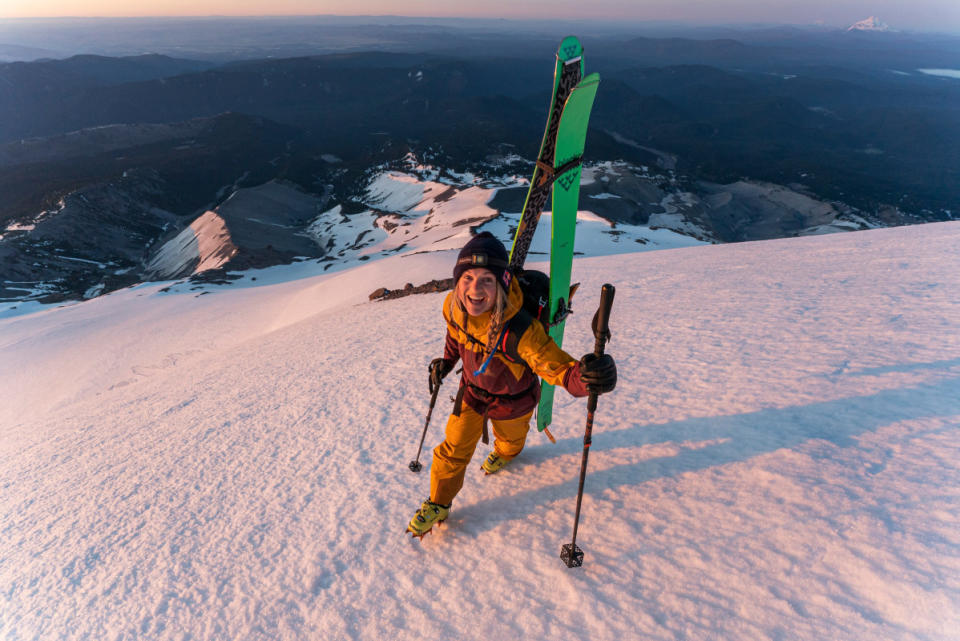
Photo: Bjarne Salen/Red Bull Content Pool
Maybe you’ve seen Matchstick Production’s Drop Everything? Or In Deep? Or Superheroes of Stoke? Let’s say you haven’t watched any MSP films. There’s still Scott Gaffney’s Fade To Winter.
Maybe you don’t log a lot of tube time at all. You like to read. Then you’d know Michelle from the POWDER Video Awards (where she received Best Female Performance). And, even if you don’t care about the ski industry at all, you’d still know Michelle from her selfless work at the High Fives Foundation and for launching a women’s avalanche safety clinic.
I caught up with the Red Bull freeskiing athlete to chat safety in the backcountry, because who better to ask for advice about venturing out of bounds than the world famous, yet still incredibly down-to-earth, Michelle Parker?
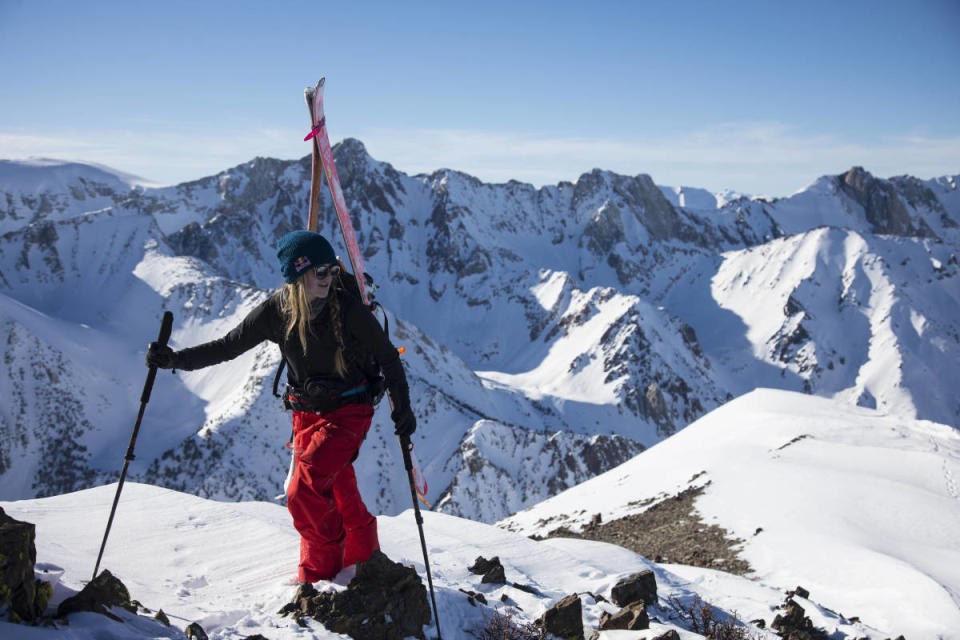
Photo: Christian Pondella/Red Bull Content Pool
It sounds like you had some friends that you lost to an avalanche pretty early in life. Can you talk a little bit about your initial interest in backcountry safety and where that stems from?
You hit the nail on the head. I was 12 when that happened, and I want to say they were 14. I didn’t understand snow science or that avalanches were a thing. It's funny now, because at that point in time in my life, I don't think there were avalanche courses available to 12 year olds. I have since taught avalanche courses to 12 year olds.
And they get so into it; they understand the concepts. It’s so valuable to start that. When you ski at the ski resort, avalanches are totally possible. That's been one big change, which I think is for the better.
When I was around 20 years old, I wanted to start filming in the backcountry. One of my peers was basically like, if you wanna start doing that, you have to get educated.
I took that super seriously, having lost 2 friends on the backside of Palisades. I knew that there was a step that I had to take before I could just go and do that.
So I went up and did guide school in Haines, Alaska. In retrospect, it was a really big entry point for avalanche education. But back then, I don't think I was aware of more entry level courses.
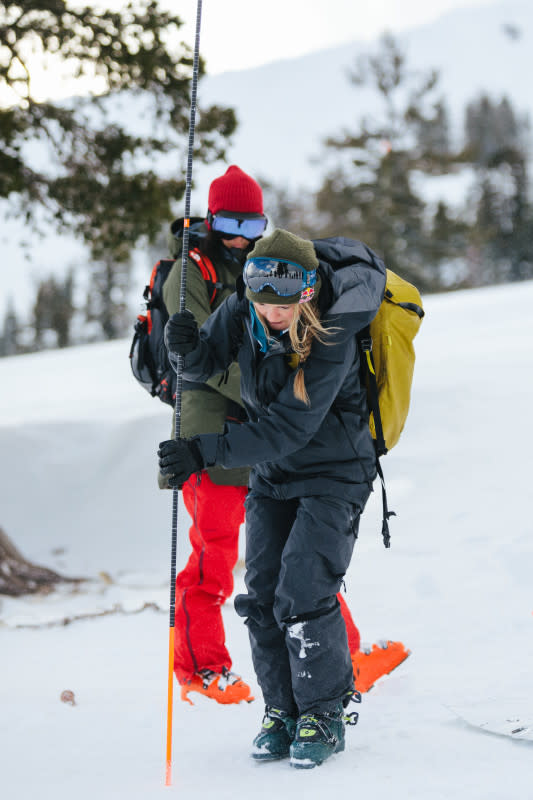
Red Bull Content Pool
Alaska was your first foray into backcountry education?
No… that's a lie. I've been hiking since I was 18, and I think I understood some of the fundamentals, but that was my first formal vacation.
When you say hiking do you mean boot packing or were you skinning?
We were skinning with trackers, and then boot packing. I think my first real trip really stepping into the backcountry, I was 17. I went to Argentina, and a lot of it is boot packing to wherever you're going.
I met a friend who was a guide at the time who helped show us around Argentina. I was always around people that knew a lot more than me.
What would you say is the bare minimum for people just looking to venture out of bounds?
A lot of people step out into the backcountry before getting any formal education. I did that too, but I don't think that is a great first step. There's a lot more intro to avalanche education courses, which are a great way to get your feet wet.
We run one with Safe As, and I think it's the perfect course, but I'm totally biased. I think taking the AIARE Level 1 avalanche education course can be really intimidating, especially since oftentimes, you're one of the only people in the classroom who identifies as a woman.
Taking an intro level course is amazing. If not, take the Avy Level 1. At the very least, you should get your feet wet and have the conversation so you're at least somewhat aware of what you're getting into.
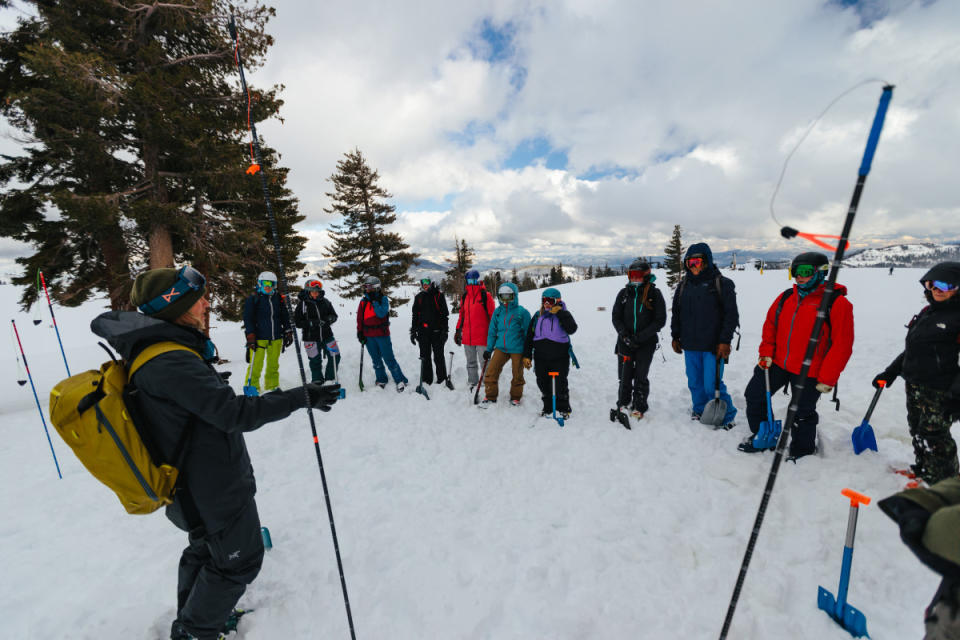
Red Bull Content Pool
It's so cool that you started a program to get that education out to so many women. Because you're totally right. Like, sometimes you're there and you just feel like, “oh, should I even be here?”
In teaching those courses, I've taught them for 12 years now. And I'm like, “Wow. There's a lot of people that have taken their Level 1 that are coming back and using it as a refresher, which is amazing.”
We do a ton of companion rescue drills, which is a very important part of being out in the mountains. We probably do more companion rescue drills than the Avy Level 1.
But, anyways, I think, the rudimentary basics, in an Avy Level 1, is that they expect you to be able to put your probe together, but how do you learn that if not from a friend? So, I recommend you take your intro class first and then take an Avy Level 1. That's a great stepping stone.
We cover a lot of basic stuff (in SafeAs' introductory classes), but it's so looked over in the education system. How to pack your backpack properly, for example, a lot of these very applicable things. What the different colors on your probe mean, why different shovels are different.
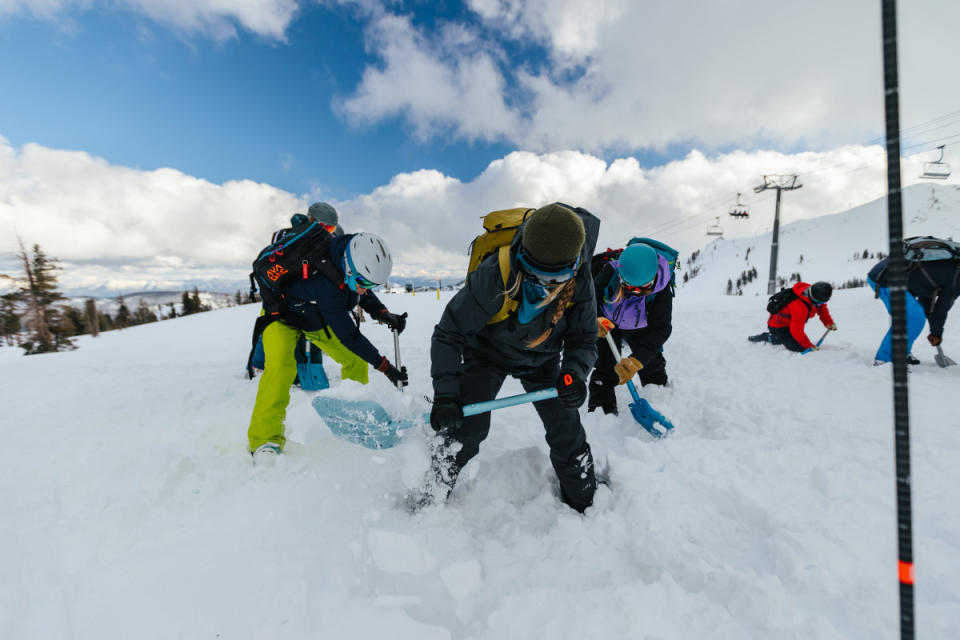
Red Bull Content Pool
How often should people take a refresher?
If you take an Avy Level 1, you could use a season, if not two, to let it absorb and gain more experience out there before you take a Level 2.
I think a lot of people have the tendency to take a lot of classes back to back, but I feel like gaining that experience in the field, you're not only book smart, but you also have been out in the mountains and understand what's going around you with weather and snowpack and stuff like route finding.
That experience really pays off. So we recommend taking a year or two off in between, and not going back to back to back with everything.
So experience is important?
Experience goes a long way, and all of this information is perishable. I'm taking a class every other year. I'm teaching them and reviewing all this stuff and doing so many companion rescue drills every year. Practicing companion rescue is key.
You can go out with your friends and set up scenarios and, as long as you're not in avalanche terrain, that's really easy to set up. But, one must know how to set that up to do it. That's where your introductory class comes in.
Once you run through a scenario, you're like, “I could set this up with my friends.” And you practice with your backcountry partners so that you all have the same skill set and skill level and can go out there and trust that they've got your back.
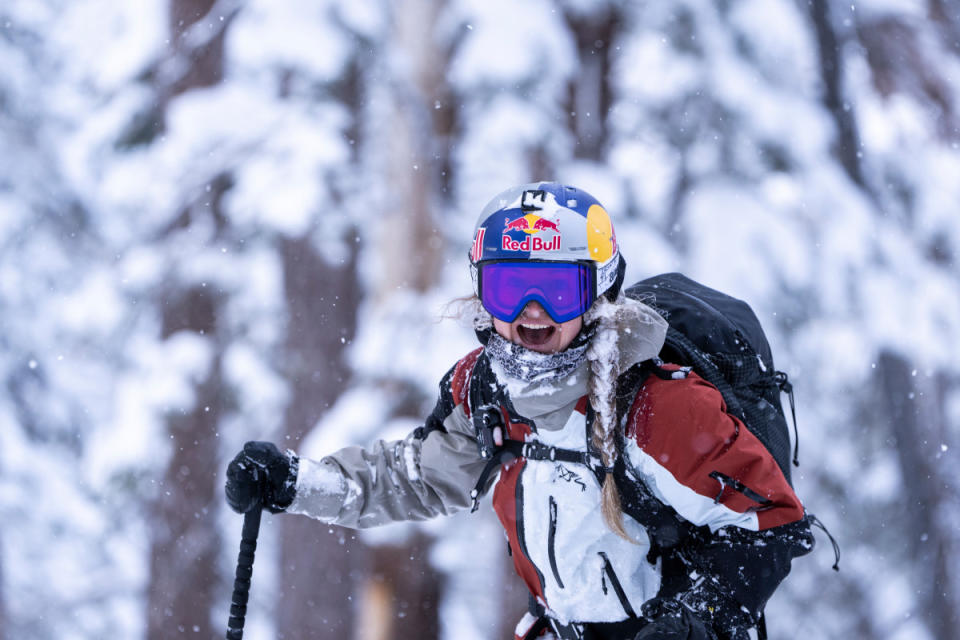
Photo: Ming Poon/Red Bull Content Pool
Could you talk a little more about how you pick people to go on trips with, or how you met the people that you go backcountry skiing with?
There's a really incredible community here in Tahoe that is inter-generational. Like, three generations deep of people who have mentored the up and coming people beneath them and so forth. Just being out in the mountains a ton, born and raised in this community.
Some of the people that I go backcountry skiing with have known me since the day I was born. They're the forefathers of our adventure skiing here in Lake Tahoe.
I like going out there with people that I can learn from and who know the terrain really well, and are just a really good hang, but we have similar objectives for the day, and similar skill sets, as far as rescue goes.
I also love going out with my girlfriends that are just recreational skiers. We still go out and have a fun day and have a little picnic on top. My partner, who's amazing, doesn't hike as much as I do, but just loves going for a casual cruiser day. I match my expectations with whoever I'm going out with.
It's such a beautiful moment where you're just hiking up the hill and connecting with people. You spend a lot of time on the skin track climbing the mountain.
It’s a couple of hours or an hour and a half or however long it takes you, but that's this epic time just to have nonstop communication and catch up. It's so social, and it's so community building. I just love that environment where no one's on their phone.
You're doing something active. You're doing something that brings you so much joy, and it's this really beautiful connection point with other people. So, yeah, that is totally one of my favorite aspects of being out in the mountains and hiking the terrain.
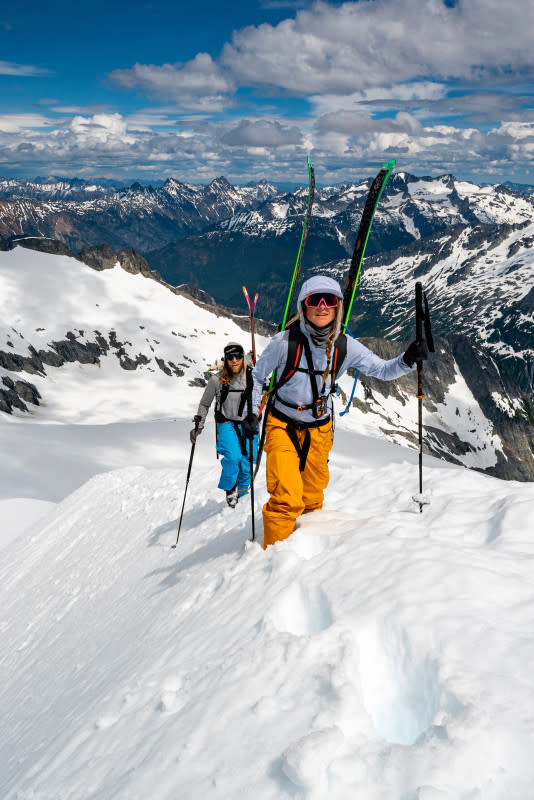
Photo: Bjarne Salen/Red Bull Content Pool
What do you usually have in your backpack?
I've got my beacon on me, obviously.
In my backpack, I have my Shovel 1 Pro and beacon. I have a little repair kit. I've got steel wool and superglue to help with bindings that rip out. I might have an extra buckle. I've got one of those things called, pipe clamps, I think, to help fix a broken pole, a couple of ski straps, and a headlamp.
My pack expands and contracts depending on my day. The medical kit that I would take on the 1st day has some triangle bandages, maybe a SAM splint, a bunch of stuff for bleeding and external wounds, some gloves. I think they've got a CPR mask in there, blister kit. And I have an emergency snack bag that I usually have electrolyte tablets in.
And, actually, out of everything in my pack that I've used to help someone who's having a bad time in the backcountry, it's usually tablets or electrolytes.
That's interesting.
Yeah. Like, they're bonking, and their muscles aren't working. They're not used to it. And you're like, boom. Have some electrolytes. Instant. You're psyched.
And then, like, the emergency snacks. If I forget food, I'll eat that. But I usually keep, like at least a bar in there and some gummies to help people if anyone needs extra food.
I have a Garmin Mini on me, which is nice for lightweight. I've got a radio for in-group communication, talking to my buddies, I've been using that also just hiking around with my friends, which is awesome. I love having the communication from the top of the hill to the bottom of the hill. It just also aids in better group dynamics when you're out there.
Extra gloves because I have different gloves for the Ascent and Decent. I usually have an extra pair of gloves in there also just because I have my skins. I've got a beanie for the hike up or baseball caps, sunglasses, sunscreen, ChapStick, hand warmers. Then depending on where you go, like, if you're hiking on the west shore and it's downhill to the road, you don't need a rescue sled, but sometimes that might also go in my bag.
That's more than I would have expected.
Yeah. That’s the biggest extent of what I would bring on a day trip.
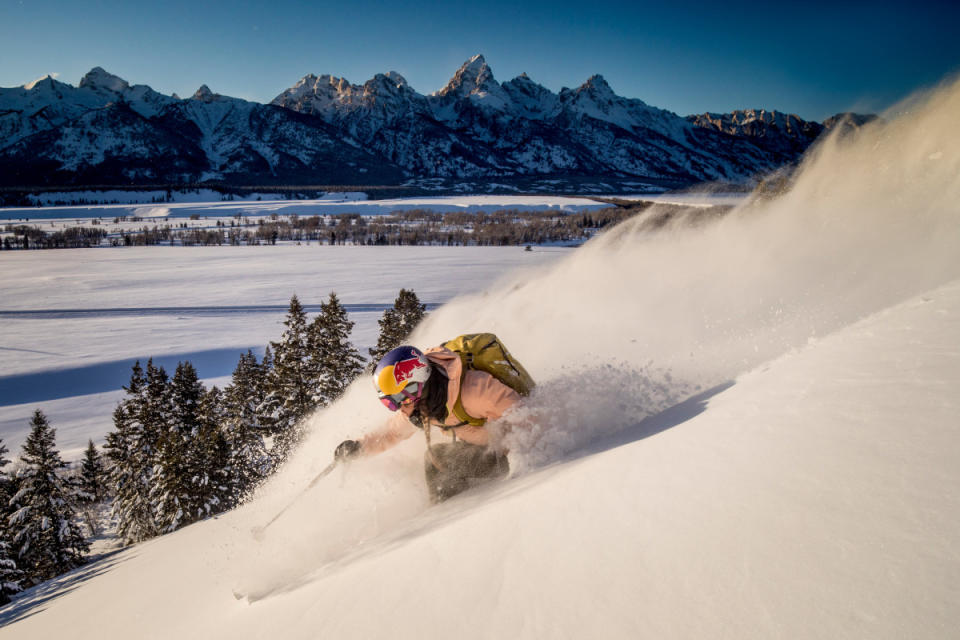
Photo: Aaron Blatt/Red Bull Content Pool
Is there anything else you wanna say to the people reading POWDER that you think they should know about the backcountry?
Learning about backcountry safety and awareness is super fun, actually. It is so important to have that knowledge. I have found backcountry awareness and traveling in the backcountry to be very applicable when talking about group dynamics and communication, and so many other aspects of life. It's taught me a lot, and it's been really cool to notice the similarities.
The backcountry is a great place to learn these life lessons. Hopefully, they're good ones. Group dynamics is so rad and so important. Being able to communicate with people and uplift them and meet people at their level. Help them out if they're struggling. You're a team out there.
I've been rescued from the backcountry from knee injuries, and all group dynamics are important. It's a cool reflection or comparison to real life (crap) that is pretty sick. And the backcountry is such a beautiful and amazing place.
It's really nice to not always try to be the most rad out there. Like, it's really special to just have a day out where you have a picnic and just enjoy your surroundings and slow it down for a minute. I think that's another rad aspect of being in the backcountry.
Related: Lake Tahoe Hit With The "Biggest Storm Of The Season"
Don't miss another headline from POWDER! Subscribe to our newsletter and stay connected with the latest happenings in the world of skiing.
We're always on the lookout for amusing, interesting and engaging ski-related videos to feature on our channels. Whether you're a professional or just an amateur, we want to see your best footage and help you share it with the world. Submit your video for a chance to be featured on POWDER and our social channels. Be sure to subscribe to our YouTube channel to watch high-quality ski videos.

